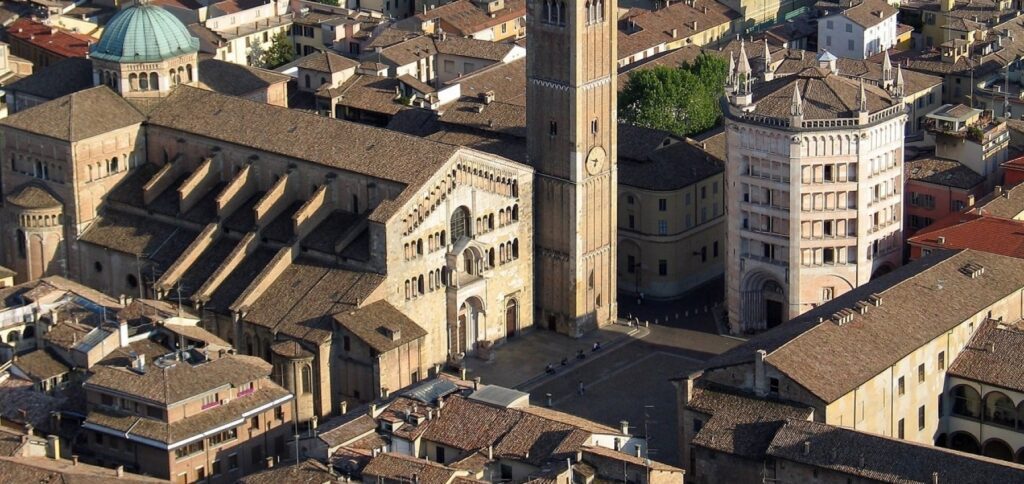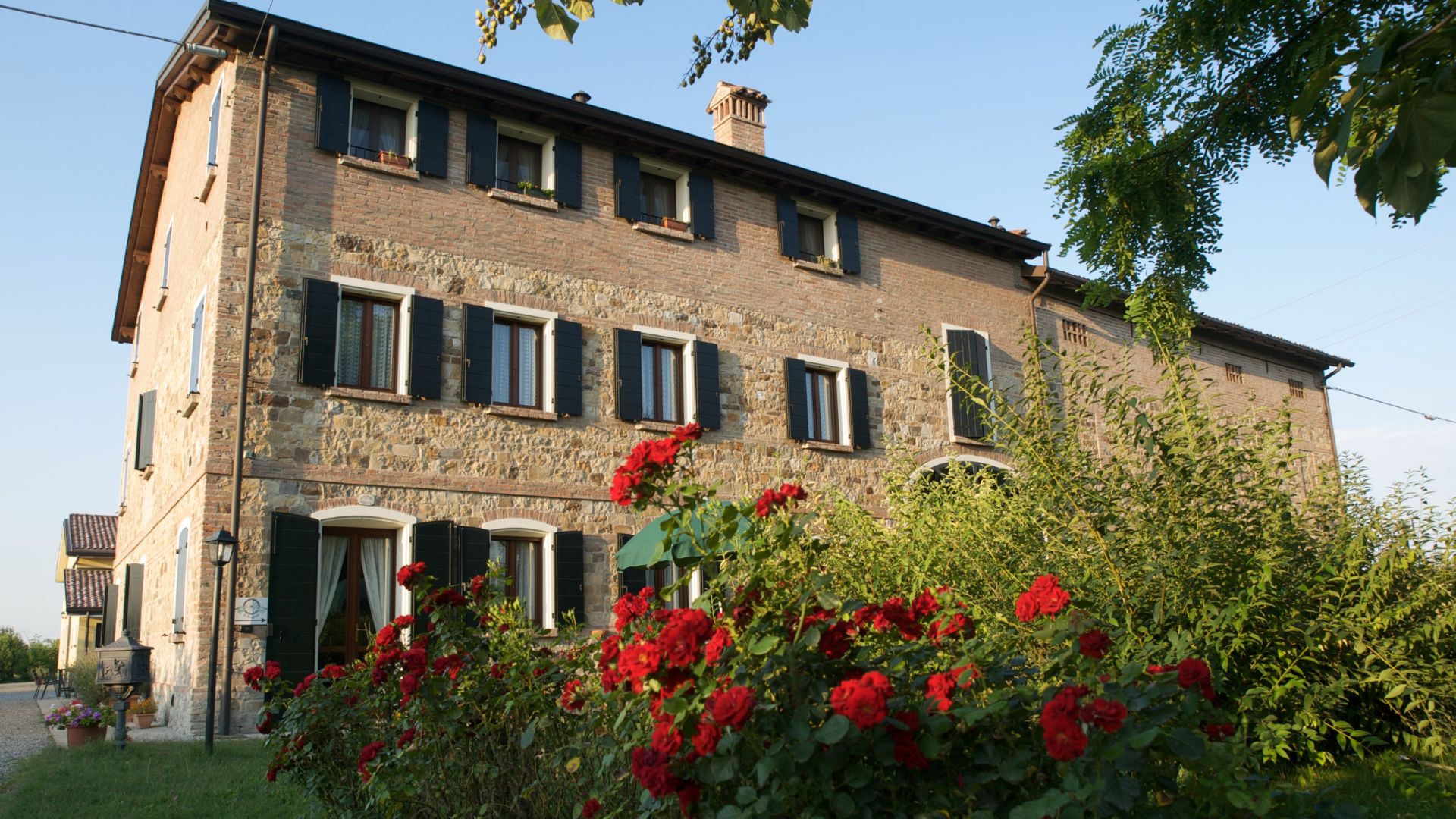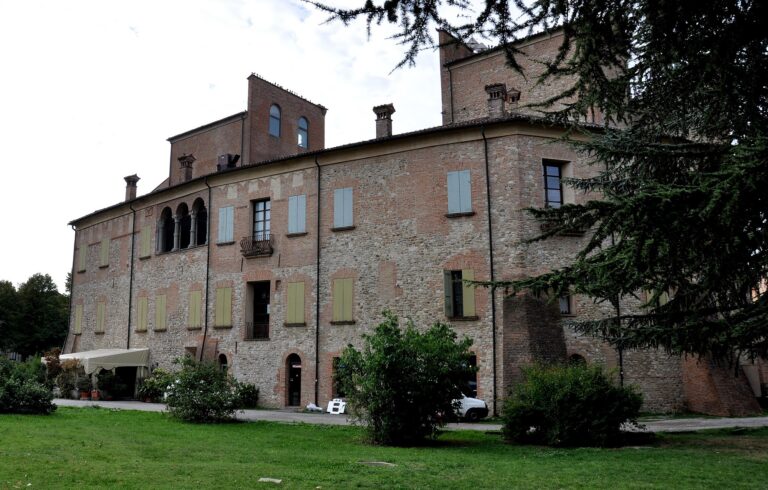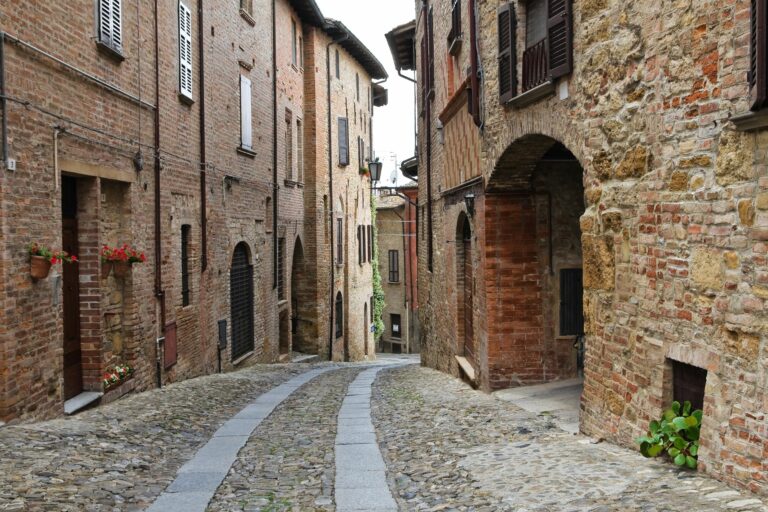Its rich history is all witnessed in the suggestive historic core of the city center which welcomes visitors and citizens in the refined atmosphere of a small capital.
Renowned for its art and music, Parma is an elegant, open and hospitable city located along the Via Emilia, between the Apennines and the Po Valley, and crossed by the stream of the same name, a tributary of the Po. The city is known in Italy and in the world for the quality of life that always places it at the top of the rankings of the cities in which to reside. The name of Parma is also linked to renowned culinary traditions, to the taste for refined and quality food, to excellent products such as Parmigiano Reggiano and raw ham.
Founded in 183 BC, Parma in 1545 became an autonomous state under the lordship of the Farnese, who ruled until 1731, when the Bourbons took over. During these years Parma became a point of reference for many painters and writers, enriching itself at the same time with works of great artistic value. Its rich history is all witnessed in the suggestive historic core of the city center which welcomes visitors and citizens in the refined atmosphere of a small capital. The historic center of Parma is marked by three large poles: Piazza Garibaldi, the center of municipal life; Piazza Duomo, where the highest artistic-religious expressions stand; and Piazza della Pilotta, today Piazzale della Pace, a symbol of ducal power.
Its great historical and cultural tradition is reflected in a myriad of monuments scattered throughout the city and its immediate surroundings, among which two of the most interesting monuments in Italy stand out: the Cathedral dedicated to the Assumption, a splendid example of Romanesque art enriched by precious paintings and frescoes such as those by Correggio on the dome and others attributable to Parmigianino and Antelami; and the Baptistery, a building symbol of the transition from late Romanesque to Gothic, inside which the thirteenth-century Byzantine-style frescoes, which cover the dome, and above all the twelve statues depicting the Months, largely due to Antelami, are worth noting. Among the other religious architectures, the following should be mentioned: the Church of the S.S. Annunziata, one of the most significant monuments of experimental Mannerism in the second half of the 16th century; the Church of the Madonna della Steccata, one of the most significant examples of the Italian Renaissance; the Church of San Giovanni Evangelista, with magnificent frescoes by Correggio and Parmigianino; and the Church of San Vitale, one of the oldest in the historic centre, inside which you can admire valuable works by great Italian artists.

Among the civil architectures, the Palazzo della Pilotta stands out, an ancient service building of the Farnese family which in the eighteenth century became the cultural center of the cities. The building is currently a precious treasure trove of unique museums such as: the Archaeological Museum; the beautiful Palatine Library, with precious incunabula and illuminated manuscripts; the National Gallery; and the Teatro Farnese, the only example in the world of a large wooden theater, built in 1618. Also of considerable interest are: Palazzo del Giardino, commissioned by Ottavio Farnese in 1561 and built to a design by Vignola, inside which there are still, among the others, some 16th century frescoes by Jacopo Bertoja, a room frescoed by Agostino Carracci and stuccoes by Luca Reti; the Governor’s Palace, built in the thirteenth century but completely rebuilt in 1760; and Palazzetto Eucherio Sanvitale, an extraordinary example of early 16th century architecture.
But Parma is above all a city of music and theatre, a passion that manifests itself in the variety of proposals and in the structures dedicated to it: the Paganini Auditorium, the House of Music, the Arturo Toscanini birthplace and museum, the House of Sound and more last is the Teatro Regio, built in 1821 by the architect Bettoli in neoclassical lines. As for the museums, in addition to those already mentioned, the following are worth a visit: the Pinacoteca Stuard, with a collection of over two hundred works from various artistic and pictorial cultures; the Glauco Lombardi Museum, with rich documentation on Maria Luigia of Austria and the Napoleonic period; the G. Ferrari Museum or Burattini Castle, with one of the most important Italian collections of puppet theater; and an unusual Chinese Art Museum, which contains one of the richest Italian collections of ceramics, jewels and paintings from China.

AGRITURISMO IL BRUGNOLO
Welcome to il Brugnolo
If you’re looking for completely independent apartments surrounded by greenery you really are in the right place here!
In fact, Brugnolo is immersed in the green nature of the Emilian countryside. For your relaxation, for that of your children, and again for the runs of your 4-legged friends, you will have 6000 square meters of park at your disposal!






